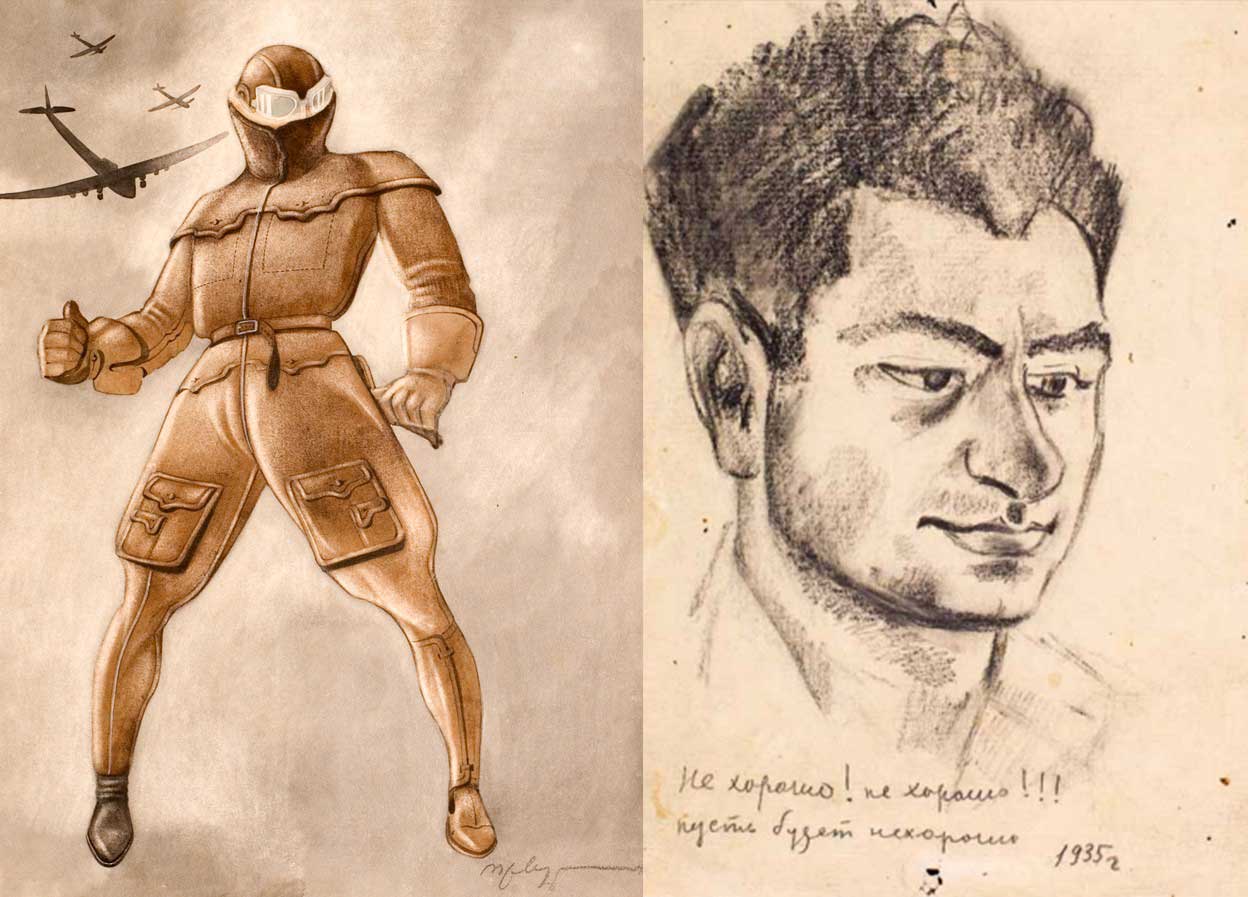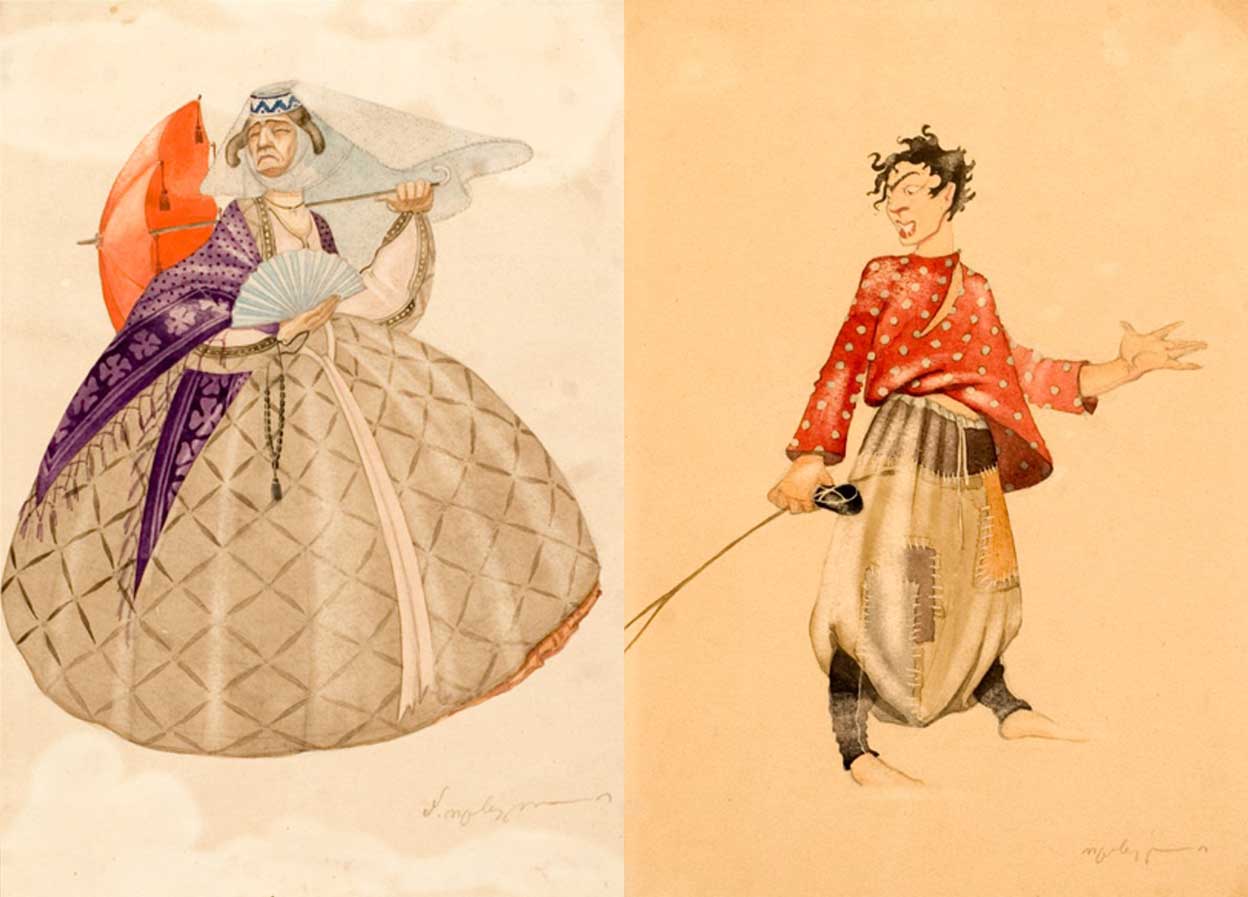
Here, in the Country of Otskheli
The great Georgian artist Petre Otskheli was not allowed to leave behind a vast legacy, yet he created an entire era—not only in scenography but in Georgian culture as a whole.
In the 21st century, numerous illustrated books about the artist have been published in Georgian and foreign languages. Those who have come across these books or attended his exhibitions—perhaps even recently at Europalia, at the BOZAR Center for Fine Arts in Brussels, where the exhibition "Avant-garde in Georgia – 1900-1936" was held—have surely discovered a previously unknown great artist, been amazed, and left in awe upon learning that these masterpieces were created by such a young artist.
He was a wunderkind in art, and for us—who are still mesmerized by this prodigy scenographer—his exhibitions will be even more valuable, encouraging visitors to take a greater interest in his work, his homeland, and to visit Georgia.

What will visitors learn and see in Georgia?
They will learn that even nearly a century later, Otskheli still captivates Georgians with the laconic decorations and delicate costumes of Uriel Acosta, which together create an eternally immortal, living canvas.
If a visitor goes to the artist's hometown of Kutaisi, they will proudly hear that this great artist of European caliber was born in this European city, in the family of a Catholic merchant.
At 20 years old, Petre was already in Tbilisi, studying at the Tbilisi Academy of Arts. At the same age, he designed a production for the Workers' Theatre. His sketches deeply impressed Kote Marjanishvili, who invited him to the theater. In less than two years, a masterpiece was born—the eternally immortal Uriel Acosta.

Here, in this country, both inside and outside museums, visitors will undoubtedly hear the tragic story of how the Red executioners took his life. Petre Otskheli’s works can be seen at the Marjanishvili Theatre Museum, the Palace of Arts, and the Simon Janashia Museum of Georgia. After viewing them, just like scenography specialists, foreign visitors will also realize that Otskheli’s art never ages—it only becomes more and more modern over time.
This will become even more evident when they see young people on the streets of Tbilisi wearing hoodies and T-shirts printed with Otskheli’s sketches.
Many will wonder how Otskheli managed to create such art in the Soviet Union, where constructivism was declared formalism and suppressed. The theater saved Petre Otskheli—he was a theater artist and was merely perceived as a set designer, a background creator. However, he was not just creating backgrounds; he was shaping the metaphysical environment that guided actors’ actions, gestures, and speech styles.
Otskheli loved the theater with all his being and felt its essence. He loved actors, who became his muses. Their inner temperament and plasticity were transferred into his sketches and later onto the stage. His favorite muse was the great actress Veriko Anjaparidze.

A person interested in Otskheli’s work who visits Tbilisi will find a sculpture in Mtatsminda Pantheon depicting the great Georgian actress precisely in the role of Judith—wearing a Petre Otskheli-designed costume and seated in his envisioned chair. A similar statue adorns the courtyard of the Marjanishvili Theatre as well.
The artist was executed in 1937 at the age of 30, but nothing could diminish the vitality and immortality of his art. Decades later, his work crossed borders, breathing new life into the artist. Petre Otskheli has become one of the faces and symbols of his homeland within the broader European cultural space, where he has always belonged—by the rank, essence, and nature of his work.
“The rights to publish the photos have been secured by the blog author, R. Shatakishvili.”